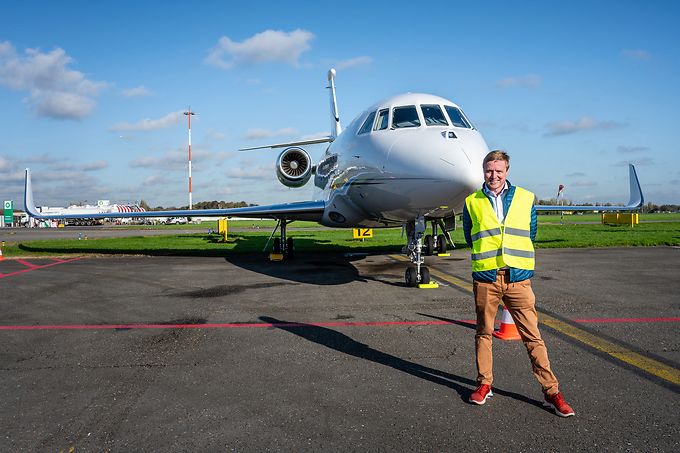Purchasing a used private jet is a significant investment and a complex process that requires careful consideration and thorough inspection. Unlike buying a car or a home, buying a jet involves specialized knowledge of aviation, mechanics, and regulatory compliance. This comprehensive article serves as a guide, outlining essential factors to consider and inspect when evaluating a used private jet for purchase.

1. Initial Research and Documentation Review
Before inspecting a used private jet in person, conduct thorough research and review all available documentation:
- Maintenance Logs: Review maintenance records to ensure regular and proper servicing.
- Airworthiness Certificates: Verify the aircraft’s certification and compliance with aviation regulations.
- Title and Ownership: Confirm clear ownership and check for any liens or legal issues.
- Accident/Incident History: Investigate any past accidents, incidents, or damage repairs.
- Service Bulletins and Airworthiness Directives: Ensure compliance with manufacturer recommendations and mandatory directives.
- Logbooks: Check for completeness and accuracy of flight hours, inspections, and modifications.
2. Physical Inspection
Inspecting a private jet involves a meticulous examination of its exterior, interior, and mechanical components:
- Exterior Inspection:
- Structure: Look for signs of corrosion, dents, or structural damage.
- Paint and Finish: Assess the condition of the paint and surface finish.
- Windows and Seals: Check for cracks, scratches, and proper sealing.
- Landing Gear: Inspect tires, brakes, struts, and retracting mechanisms.
- Interior Inspection:
- Cabin Condition: Evaluate the upholstery, carpets, and overall cleanliness.
- Amenities: Check functionality of seats, entertainment systems, and galley appliances.
- Cabinetry and Fixtures: Ensure all fixtures are securely attached and in good condition.
- Mechanical Systems:
- Engines: Review maintenance records and perform a visual inspection of engines for leaks, corrosion, and wear.
- Avionics: Test navigation, communication, and other avionics systems for functionality.
- Fuel Systems: Inspect tanks, lines, and fueling ports for leaks or corrosion.
- Electrical Systems: Check wiring, batteries, and generator functionality.
3. Performance and Flight Testing
Conducting a flight test is crucial to assess the jet’s performance and handling characteristics:
- Pre-Flight Inspection: Verify controls, instruments, and emergency equipment.
- Flight Characteristics: Evaluate takeoff, climb, cruise, and landing performance.
- Systems Testing: Monitor engine performance, avionics, and flight controls during flight.
- Noise and Vibration: Note any unusual noises or vibrations that could indicate mechanical issues.
4. Compliance with Aviation Regulations
Ensure the used private jet complies with current aviation regulations and standards:
- FAA/EASA Compliance: Confirm adherence to Federal Aviation Administration (FAA) or European Union Aviation Safety Agency (EASA) regulations.
- Modifications and Upgrades: Verify that all modifications and upgrades are properly documented and approved.
- AD/SB Compliance: Ensure compliance with Airworthiness Directives (AD) and Service Bulletins (SB).
5. Financial and Legal Considerations
Beyond the physical inspection, address financial and legal aspects of purchasing a used private jet:
- Purchase Agreement: Draft a detailed purchase agreement outlining terms, conditions, and warranties.
- Financing and Insurance: Arrange financing if necessary and secure comprehensive insurance coverage.
- Tax Implications: Consult with tax advisors regarding sales tax, VAT, and depreciation benefits.
- Legal Review: Have legal professionals review contracts, ownership documents, and liabilities.
6. Expert Assistance and Evaluation
Engage qualified professionals for thorough inspections and evaluations:
- Aircraft Mechanic: Hire a certified aircraft mechanic or technician to conduct a detailed inspection.
- Aviation Consultant: Consult with an aviation expert or consultant to assess market value and condition.
- Legal Advisor: Seek guidance from legal advisors specializing in aviation law for contract review and compliance assurance.
7. Post-Purchase Considerations
After purchasing a used private jet, address ongoing maintenance, operation, and regulatory requirements:
- Maintenance Schedule: Establish a regular maintenance schedule and adhere to manufacturer recommendations.
- Operating Costs: Budget for ongoing operating costs, including fuel, maintenance, hangar fees, and insurance.
- Regulatory Compliance: Stay updated on aviation regulations and ensure continued compliance.
- Training and Certification: Provide training for pilots and crew on the specific aircraft model and systems.
Conclusion
Inspecting a used private jet requires a systematic approach, combining technical expertise, regulatory knowledge, and thorough documentation review. By following this comprehensive checklist, prospective buyers can ensure they make an informed decision based on the condition, performance, and legal compliance of the aircraft. Whether purchasing for personal use, business travel, or investment, conducting a detailed inspection and seeking expert guidance minimizes risks and maximizes the enjoyment and value of owning a private jet. Remember, thorough preparation and diligence during the inspection process pave the way for a rewarding ownership experience in the world of private aviation.
